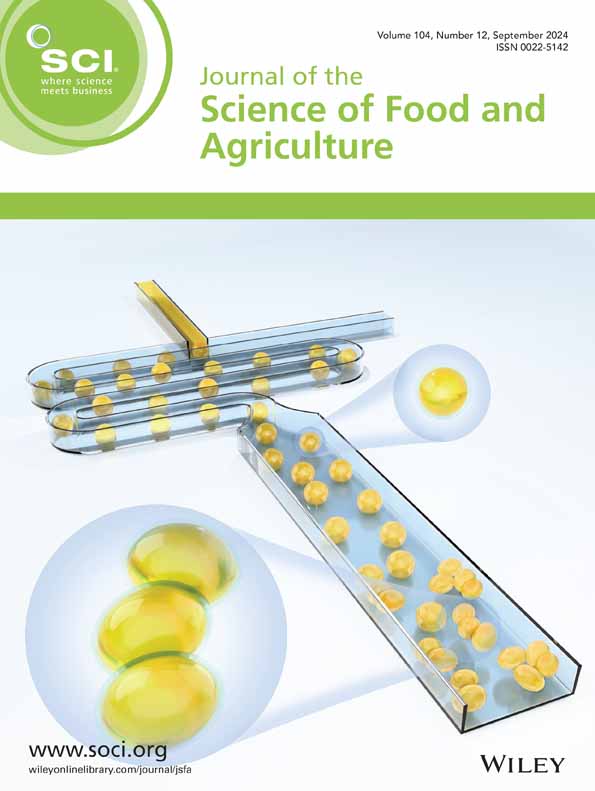下载PDF
{"title":"Expanding our food supply: underutilized resources and resilient processing technologies","authors":"Dietrich Knorr, Mary Ann Augustin","doi":"10.1002/jsfa.13740","DOIUrl":null,"url":null,"abstract":"<p>Many underutilized food resources have been traditionally used by regional and poor communities. The history of their consumption makes them potential new food sources for incorporation into the wider food supply. The ability to tap the potential of undervalued and underutilized food sources will reduce the world's reliance on a limited number of food sources and improve food security and sustainability. The expansion of the food diversity of the food supply to include underutilized food resources will require overcoming challenges in the efficient and profitable production of the raw material, application of suitable postharvest handling procedures to maintain the quality of perishable produce, and the use of appropriate traditional and emerging food processing technologies for conversion of the raw material into safe, nutritious and consumer-acceptable foods. Improvement of food processing technologies, particularly resource-efficient resilient food processes, are required to ensure the safety, quality and functionality of the whole food or extracts, and to develop ingredient formulations containing new foods for manufacture of consumer food products. Factors that help facilitate the social acceptance of new underutilized foods include increasing consumer knowledge and understanding of the contribution of new underutilized food resources to diet diversity for good nutrition, confidence in the safety and value of new foods, and their low environmental impact and importance for future sustainable food. The introduction of new underutilized food resources will increasingly require collaboration along the whole food value chain, including support from government and industry. © 2024 The Author(s). <i>Journal of the Science of Food and Agriculture</i> published by John Wiley & Sons Ltd on behalf of Society of Chemical Industry.</p>","PeriodicalId":17725,"journal":{"name":"Journal of the Science of Food and Agriculture","volume":"105 2","pages":"735-746"},"PeriodicalIF":3.5000,"publicationDate":"2024-07-11","publicationTypes":"Journal Article","fieldsOfStudy":null,"isOpenAccess":false,"openAccessPdf":"https://www.ncbi.nlm.nih.gov/pmc/articles/PMC11632173/pdf/","citationCount":"0","resultStr":null,"platform":"Semanticscholar","paperid":null,"PeriodicalName":"Journal of the Science of Food and Agriculture","FirstCategoryId":"97","ListUrlMain":"https://onlinelibrary.wiley.com/doi/10.1002/jsfa.13740","RegionNum":2,"RegionCategory":"农林科学","ArticlePicture":[],"TitleCN":null,"AbstractTextCN":null,"PMCID":null,"EPubDate":"","PubModel":"","JCR":"Q1","JCRName":"AGRICULTURE, MULTIDISCIPLINARY","Score":null,"Total":0}
引用次数: 0
引用
批量引用
Abstract
Many underutilized food resources have been traditionally used by regional and poor communities. The history of their consumption makes them potential new food sources for incorporation into the wider food supply. The ability to tap the potential of undervalued and underutilized food sources will reduce the world's reliance on a limited number of food sources and improve food security and sustainability. The expansion of the food diversity of the food supply to include underutilized food resources will require overcoming challenges in the efficient and profitable production of the raw material, application of suitable postharvest handling procedures to maintain the quality of perishable produce, and the use of appropriate traditional and emerging food processing technologies for conversion of the raw material into safe, nutritious and consumer-acceptable foods. Improvement of food processing technologies, particularly resource-efficient resilient food processes, are required to ensure the safety, quality and functionality of the whole food or extracts, and to develop ingredient formulations containing new foods for manufacture of consumer food products. Factors that help facilitate the social acceptance of new underutilized foods include increasing consumer knowledge and understanding of the contribution of new underutilized food resources to diet diversity for good nutrition, confidence in the safety and value of new foods, and their low environmental impact and importance for future sustainable food. The introduction of new underutilized food resources will increasingly require collaboration along the whole food value chain, including support from government and industry. © 2024 The Author(s). Journal of the Science of Food and Agriculture published by John Wiley & Sons Ltd on behalf of Society of Chemical Industry.
扩大粮食供应:未充分利用的资源和弹性加工技术。
许多未充分利用的粮食资源历来为地区和贫困社区所利用。它们的消费历史使其成为潜在的新食物来源,可纳入更广泛的食物供应中。挖掘价值被低估和利用不足的食物来源的潜力,将减少世界对数量有限的食物来源的依赖,提高粮食安全和可持续性。要扩大粮食供应的粮食多样性,将未充分利用的粮食资源包括在内,就必须克服以下方面的挑战:高效和有利可图的原料生产;采用适当的收获后处理程序,以保持易腐农产品的质量;利用适当的传统和新兴食品加工技术,将原料转化为安全、营养和消费者可接受的食品。需要改进食品加工技术,特别是资源节约型弹性食品加工技术,以确保整个食品或提取物的安全、质量和功能,并开发含有新食品的配料配方,用于生产消费食品。有助于促进社会接受未充分利用的新食品的因素包括:提高消费者对未充分利用的新食品资源对膳食多样性的贡献的认识和理解,以获得良好的营养;对新食品的安全性和价值的信心;以及新食品对环境的低影响和对未来可持续食品的重要性。引入未充分利用的新食物资源将越来越需要整个食物价值链的合作,包括政府和行业的支持。©2024年作者。食品与农业科学杂志》由约翰威利有限公司代表化学工业学会出版。
本文章由计算机程序翻译,如有差异,请以英文原文为准。


 求助内容:
求助内容: 应助结果提醒方式:
应助结果提醒方式:


